Kutani ware, also referred to as “Kutaniyaki”, is one of the most colourful styles of Japanese porcelain. The beautiful motifs often feature nature, animals, and intrinsically painted ornaments – making each Kutani plate, tea-set, and of course, sake cup and tokkuri, a true highlight on any table.
The History of Kutani
Kutani ware has a long history spanning over 350 years. It is the traditional craft of a small village named Kaga in Ishikawa prefecture. It was in this tiny mountain village where the first Kutani kiln was established in 1655. The porcelain created here had a unique charm, colorful with a rich overglaze, and displayed fluid brushwork, unlike anything else at the time.
Over the years, kilns were abandoned and revived. Most notably by the “Kaga-Clan” who held residence in the area at the time. Enthusiastic about the arts, they endorsed several artistic works, especially the making of Kutani porcelain. Moreover, they are the reason why we are left with an abundance of historical pieces of this beautiful ceramic.
Kutani Styles
There are a variety of styles, however, Shouza Style, a fusion of all its variations is what we more commonly recognize as Kutani these days.
Each style has developed gradually over centuries and is generally related to the kiln it was produced in. However, most styles can be differentiated by their distinctive color schemes – either multicolored with a heavy use of blues and greens, or more subtle designs that predominantly feature reds and golds.
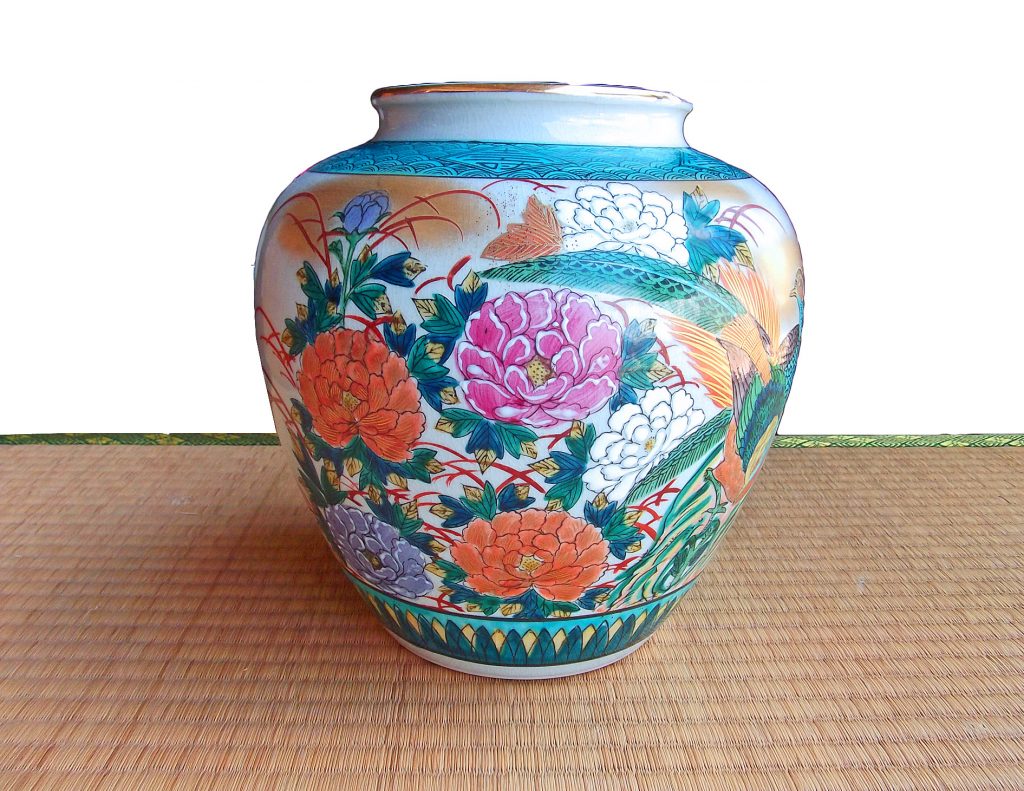
Ko-kutani Style
The oldest Kutani ware is called Ko-Kutani, dating back to 1655. It features bold designs, often extremely detailed and typically using five colors: Prussian blue, green, yellow, red, and purple, to create a luxurious look. As far as we know, it has been produced for about 50 years until the kilns in Kutani village closed their doors.
About 150 years later, Mokubei style arrived. Quite different from Ko-Kutani, this style used a lot more red and instead of depicting nature, motifs now include people and landscapes.
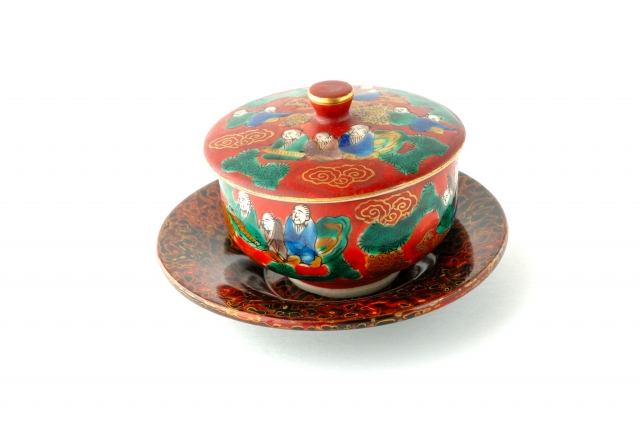
Mokubei Style
Only 15 years later “Yoshiyada style” appears, with designs and colors much closer to the original Ko-Kutani. Back are the blues and greens. This style uses four colors with very little to no white space.
Then, as another 15 years passed, “Iidaya style” was born. Gone are the multi-colored motifs as this style showcases the color red in contrast with white and sophisticated gold details to emphasise its paintings.
15 years later, the styles merged and “Shoza style” was created. A fusion of all motifs and colours, and what is generally known as Kutani ware today.
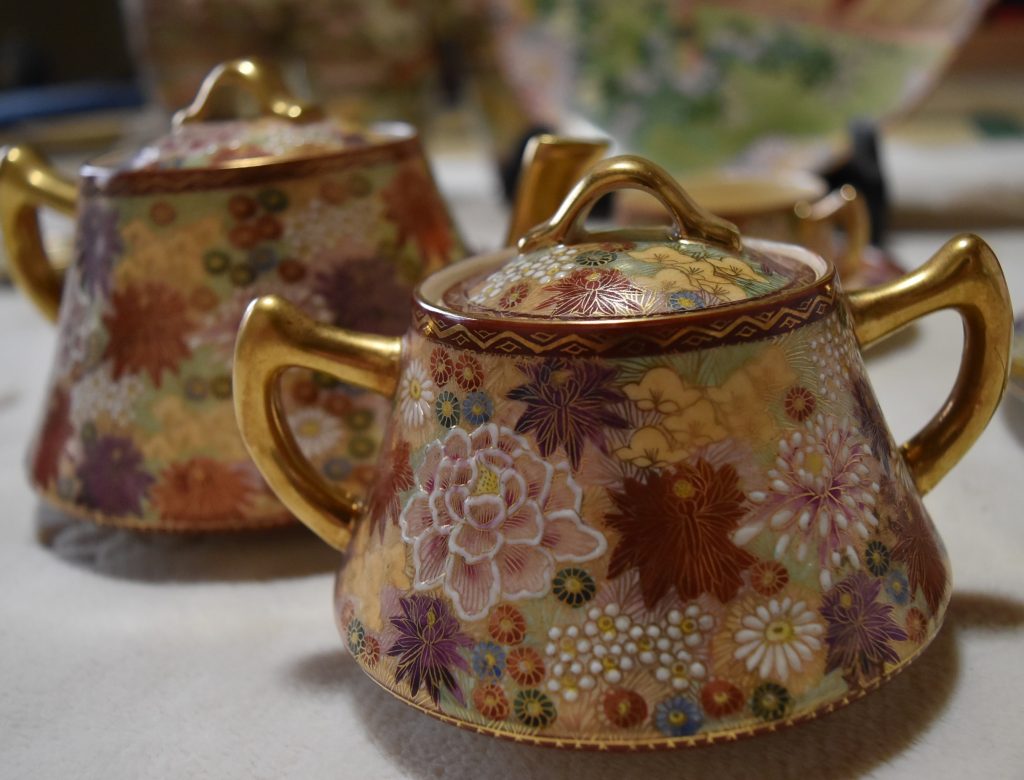
Eiraku Style
Last but not least, “Eiraku Style” emerges another 15 years later. The colours are back to an overall red look, with gold used as paint and the designs have become more subtle and mellow. It is the culmination and wraps up the definition of Kutani ware.
Kutani Today
Kutani ware or “Japan Kutani”, as it is known in the west, has become popular for its elegant look and luxury feel. Presently, a mix of antique Kutani sake cups and tokkuri, as well as new creations, are available both in stores and online. No visit to Ishikawa Prefecture would be complete without visiting a ceramic shop and purchasing at least one piece.
Whether you select a historic sake set with its traditional patterns and motifs, or opt for a newer item depicting more contemporary designs, you will certainly be pleased. So be sure to bring home a unique and timeless piece of Japanese culture.
Kutani Ware - The Perfect Sake
Kutani ware is a great vessel to drink sake from for many reasons. The cups are generally light and their smooth texture does not interfere with the taste of the sake. Kutani sake cups are texturally a clean canvas much like the “Kikichoko”, the white sake cup used in traditional sake tasting. Another bonus is that often the design of the cup continues on the inside, which is great for evaluating the turbidity and hue of a particular sake.
But above all, they are most loved for their designs – Because as versatile as Japanese sake can be, so is Kutani ware. Drink some warmed Honjozo sake from an “Iidaya Style” cup and the warm red colors of the sake cup will enhance the taste and feel of the sake itself. Or, sip some slightly chilled floral junmai daiginjo sake from a “Ko-kutani Style” cup and immerse yourself in its floral beauty a combination of smell, taste and design.
Whichever sake you decide to go for, this versatile porcelain will enhance any sake you choose. It is truly a unique experience for all the senses.


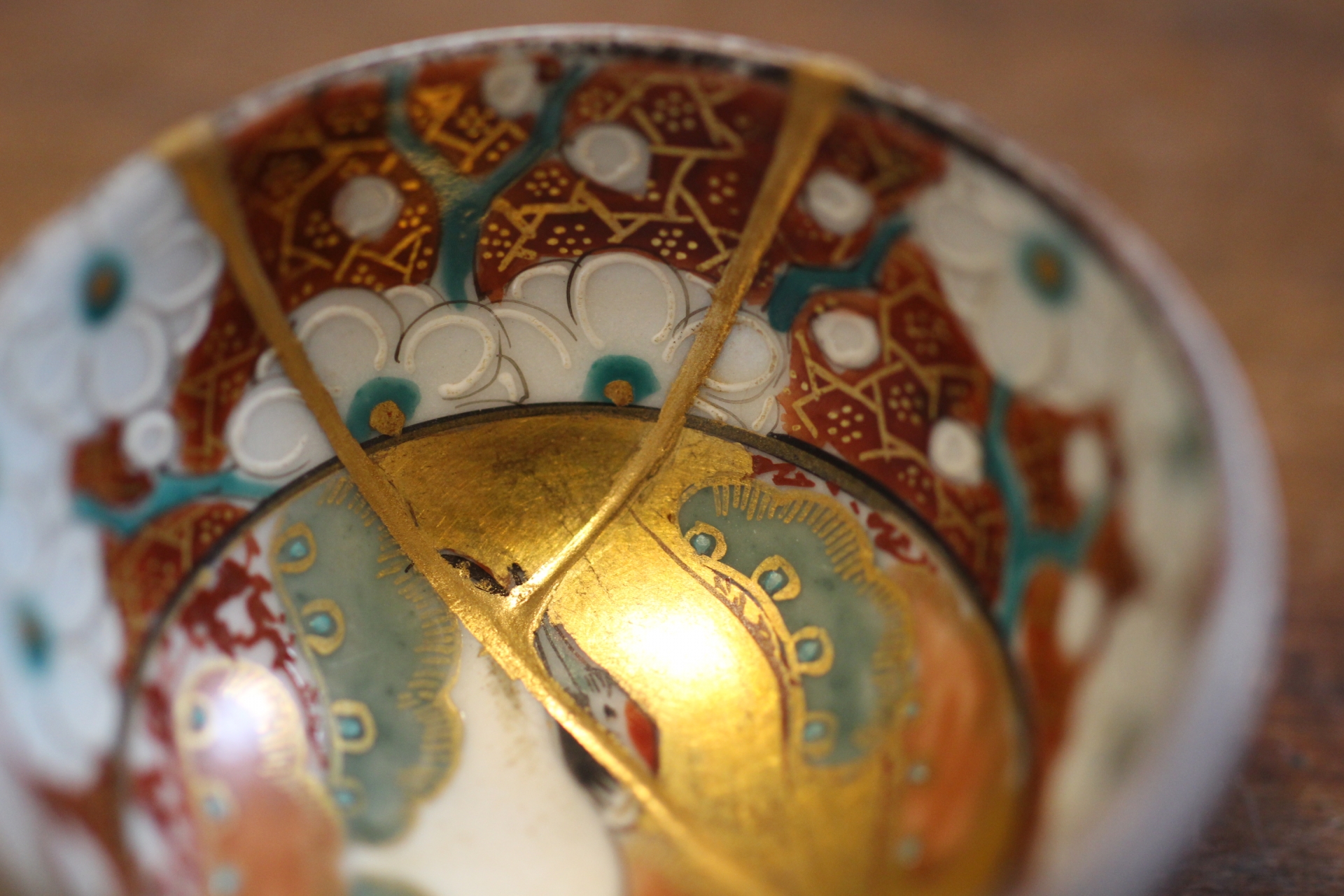



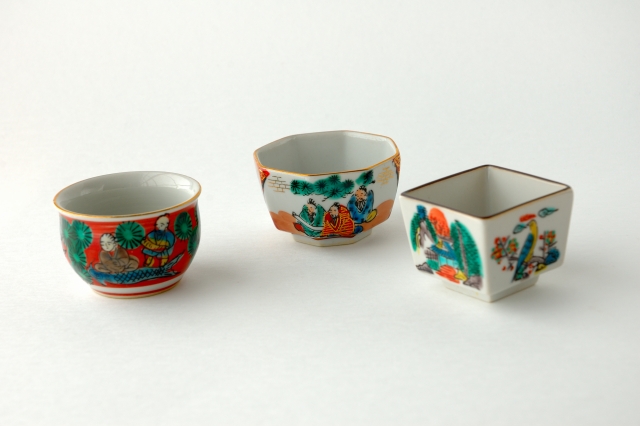


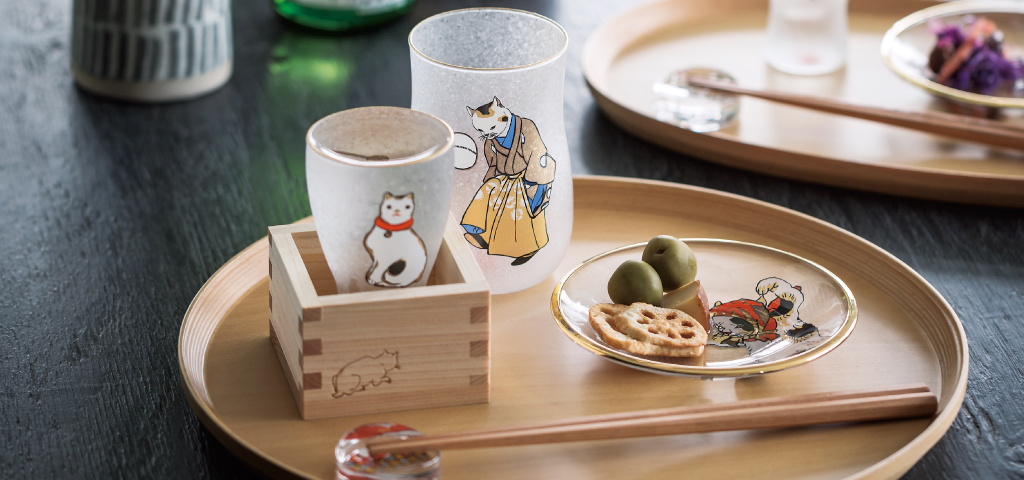
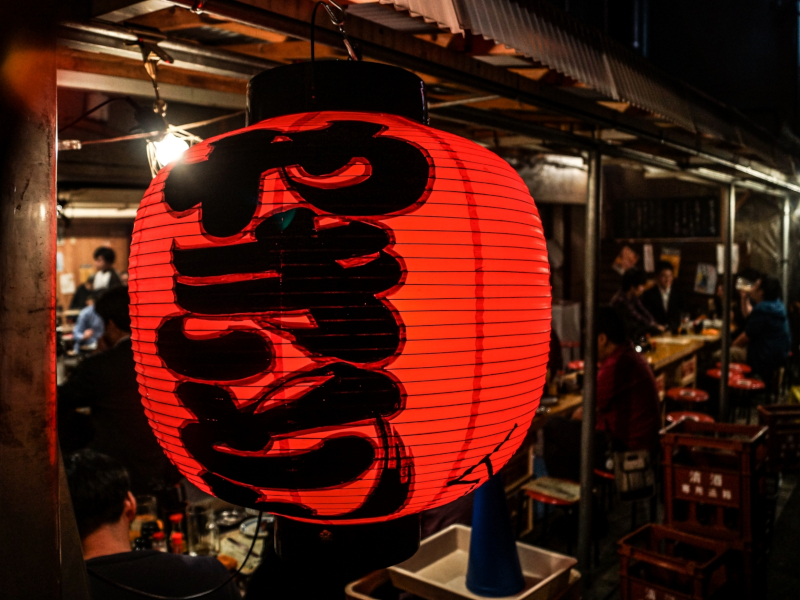


Cindy is a Tokyo based content creator and certified Sake Sommelier. Her goal is to share her obsession for Japan, teach you about Sake and show you the local hidden treasures that she finds on her travels.